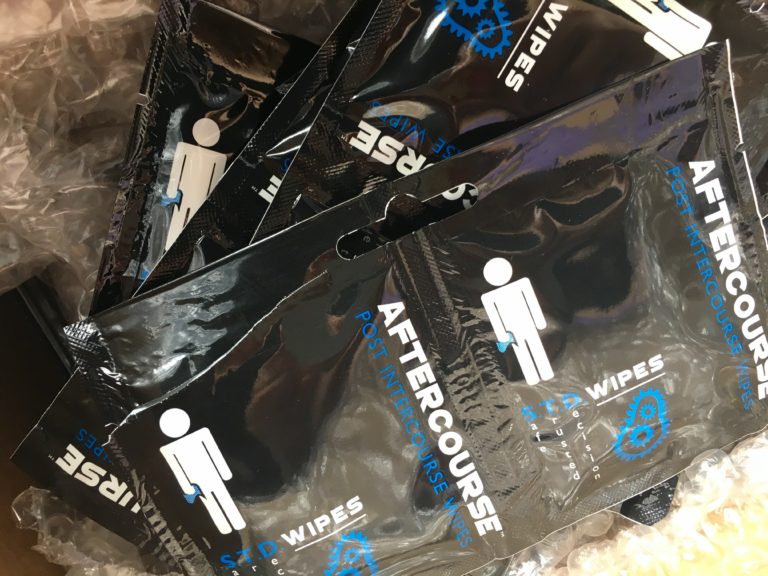
I’ve been using menstrual cups for more than 12 years. When I was 16, my best friend at the time bought one from a local health food store because she was concerned about the environmental impact of pads and tampons (reasonably so) and wanted to try a more eco-friendly alternative.
I, on the other hand, had been using menstrual sea sponges (which I hadn’t yet learned are probably not safe to use), but had found that they couldn’t contain my flow and would leak whenever I sneezed (!!), so I wrote an email to my friend. “I’m looking at the DivaCup,” I said. “What are your experiences? Do you love it? Have you had any issues with it? Any words of warning?”
My friend wrote me back a glowing review in which she said she loved her DivaCup the way she loved her Coach bag, because both were built to last a long time. “It feels a lot sexier than tampons, too,” she wrote, “because it’s so much cleaner and because of that no-leakage factor.” I was sold, and bought my first menstrual cup online a few days later.
In the years since, I’ve tried many different cups, and have learned a lot about the best ways to use them. Here’s some of what I learned the hard way, presented here so that you can learn it the easy way!
Cup Selection
• There’s a great LiveJournal page where the ever-resourceful menstrual cup community has assembled sizing info on many of the cups currently available, as well as their capacity and some other useful stuff. If you’ve tried a cup before and didn’t like the sizing for your particular anatomy, I would suggest going on there and looking for a cup that’s longer/shorter/wider/thinner (whichever you think you need).
• While different-sized cups are often described as being suitable for people who have or haven’t given birth vaginally, that’s definitely not the only factor that can decide which cup size and shape is most comfortable for you. Take companies’ recommendations into consideration, but know that you know your own body better than they do.
• I’ve probably tried 8-10 different kinds of menstrual cup over the years, and my all-time favorite is the large Yuuki cup in firm silicone (they also make a softer silicone version, and a smaller size). I’ve noticed that with my particular anatomy, soft silicone cups tend to leak more, especially if I’m moving around a lot. I find, by contrast, that the firm Yuuki pops open easily when I insert it and almost never leaks when inserted properly (see below for insertion tips).
• A while ago, I was sent the Intimina Ziggy menstrual cup, which has a different shape and insertion method than most cups. I find that its flatter shape is sometimes more comfortable for me on days when my period is causing some vaginal discomfort/sensitivity. It also takes less hand dexterity to insert (you just pinch it, push it in, and tuck the front rim behind your pubic bone), so I often choose it instead of my Yuuki when my hand pain is flaring up. The Ziggy definitely leaks more than my Yuuki, but if I’m just lying around at home as I’ve mostly been doing lately, that’s not a huge deal for me.
Inserting a Cup
• First of all, if your cup has a stem to make removal easier, be aware that cutting the stem off (carefully, with sharp scissors) is always an option. I cut the stem off my Yuuki after only a couple of wears because I found that it was poking me in the vaginal wall and wasn’t necessary for removal. Some people just trim the stem a bit shorter, depending on their body and preferences.
• I have found that running some cold water over a menstrual cup right before insertion causes the silicone to temporarily firm up a little, which makes it easier to insert the cup.
• Your cup probably comes with insertion instructions, so look at those. There are numerous different ways to fold a cup so it can be inserted; I usually sort of fold mine in half so it resembles a “C” shape from the top, and slide it in while it’s folded.
• Lube can be helpful for insertion, especially when you’re first learning how to do it. Just make sure to only use water-based lube because other kinds may damage the cup or mess with the balance of your vaginal flora.
• Once the cup is inside you and past your pubic bone, you need to get it to unfold/open up. I usually do this by putting my thumb on one side of the cup and my index finger on the other side, and gently rotating/twisting the cup until I feel it open up. Sometimes doing Kegels can also help with this.
• Rotating the cup, as described above, can also help create a mild “seal” between the cup and your cervix, thereby reducing leakage. I find that only some cups are consistently able to achieve a good seal in this way, my beloved Yuuki being one of them.
• I know that this process sounds complicated, but I promise that once you’ve done it a few times, it gets much easier and more intuitive. I barely have to think about putting mine in nowadays; it comes very naturally.
Wearing a Cup
• Barring vaginismus or other legit vaginal health issues, you shouldn’t generally be able to feel a cup while you’re wearing it (in much the same way as a tampon), or at least it shouldn’t be uncomfortable at all. If it is uncomfortable, you may not be inserting it deeply enough or you may be using a cup of a size or firmness that doesn’t work well for your anatomy.
• It’s probably a good idea to wear a pantyliner or pad for at least the first few times you wear a cup, incase of leakage. But even after wearing cups for 12+ years, I’ll still sometimes put a reusable pad in my underwear on really heavy flow days/nights, just incase.
Removing a Cup
• You should not wear a cup for longer than about 8 hours at a time without, at the very least, taking it out and rinsing it off before re-inserting it. This is because menstrual cups obstruct the vagina’s self-cleaning process, so it’s easy for your vag’s natural balance of flora to get thrown off if you wear a cup for 10-12+ hours without rinsing it. Trust me, I’ve gotten bacterial vaginosis from doing this before; learn from my mistakes!
• The first step when removing your menstrual cup is to break the seal between the cup and your cervix. In my experience, the best/easiest/fastest way to do this is to press a finger firmly against the side of the cup, just below the rim; this causes the cup to bend inwards, breaking the seal. It is especially important to MAKE SURE you break the seal before removal if you have an IUD in; some doctors say you straight-up can’t use menstrual cups if you have an IUD, because of the risk of the cup “sucking” the IUD out during removal, but if you break the seal properly every time, there will be much less risk of that. (I’m not a doctor, though, so ask yours if you’re not sure!)
• Once the seal is broken, you can gently pull the cup out. I usually do this over the toilet so the blood goes in there, but beginners may want to do it in a shower/bathtub at first in case of splashing or spilling. Like insertion, removal gets much easier with repetition.
• When you remove your cup to empty it (which, as I mentioned, you should do at least once every 8 hours), it’s best to wash it off in the sink before re-inserting it, either with just water or with water and a mild soap. However, if you’re doing this in a public bathroom and can’t get to the sink, you could either rinse the cup over the toilet with some water from a bottle you bring with you, or just wipe it off as best you can with toilet paper before re-inserting.
• Most cups have tiny holes around the rim that help with breaking the seal. Take care to wash these really well whenever you wash your cup, as they can be a breeding ground for bacteria otherwise. I usually fill the cup with soapy water, put my hand flat over the top of it, and squeeze, so that water is forced out of the tiny holes. I’ll do that a few times until I see that the holes have been completely cleared, and then rinse.
Cups & Sex
• Some cup manufacturers, like Intimina of the aforementioned Ziggy, claim that their cup can be worn during sex (by which they mean penetrative vaginal sex, which isn’t the only kind of sex, obviously). Personally I have never found a cup that can actually be worn during penetrative sex without leaking a ton, feeling uncomfortable for one or both partners, and/or straight-up obstructing the entire orifice.
• That said, it’s very possible to receive oral sex while wearing a cup (and it may in fact be one of the least messy ways to do so on your period) as well as other forms of external penetration. I’ve also found, in various lazy menstrual masturbation sessions, that some cups sit high enough to give you a little bit of G-spot access for stimulation with fingers or a slim toy (depending on where your spot is located and the size of your cup).
• For the most part, when I want to have penetrative sex of any kind while on my period, I’ll take my cup out at the beginning of the session (and lay down a towel). This is because the sexual arousal process causes the vagina to lengthen and the cervix to lift, so it can be really difficult to remove a cup once you’re already super turned on because you will have to reach farther. Taking it out before any/much foreplay is much easier for me.
• If I’m having sex with someone who I’ve never discussed menstrual cups with, I’ll make sure to give them a brief explainer at some point before sex. It can be alarming to go to finger someone and feel something inside their vagina that you can’t identify and have never felt before!
Cup Maintenance
• Cups will usually become discolored over time. This is normal. You can slow down this process by only washing yours in cold water, because warm/hot water encourages bloodstains. I have also found that leaving my cup in the sunshine for several hours (like, say, on a windowsill) helps remove some of the coloration. Some people also like to soak theirs in a 3% hydrogen peroxide solution for a few hours (make sure to wash off your cup very well with soap and water afterward!).
• At least once per menstrual cycle (generally after your period is over), you should sanitize your cup thoroughly. Some people do this using just soap and water; some people go further than that, boiling their cup in a pot on the stovetop or soaking it in various diluted alcohol or bleach solutions. I personally have never had an issue that would cause me to believe that a thorough soap-and-water wash isn’t enough. (This advice only applies if your cup is made of silicone, however. Some are made of more porous materials, such as thermoplastic elastomer; I would not recommend these, but if you do happen to have one, you should clean it more often and more thoroughly than you would silicone.)
• I have had my favorite cup for 10 years and it still looks fine and works great. Silicone cups are meant to last a long time, which is one of the reasons they’re so beneficial ecologically and economically. You can replace yours if/when you want to, but as long as it’s not structurally damaged in some way, you probably don’t have to.
Have you tried menstrual cups? What are your fave tips and tricks for using them?
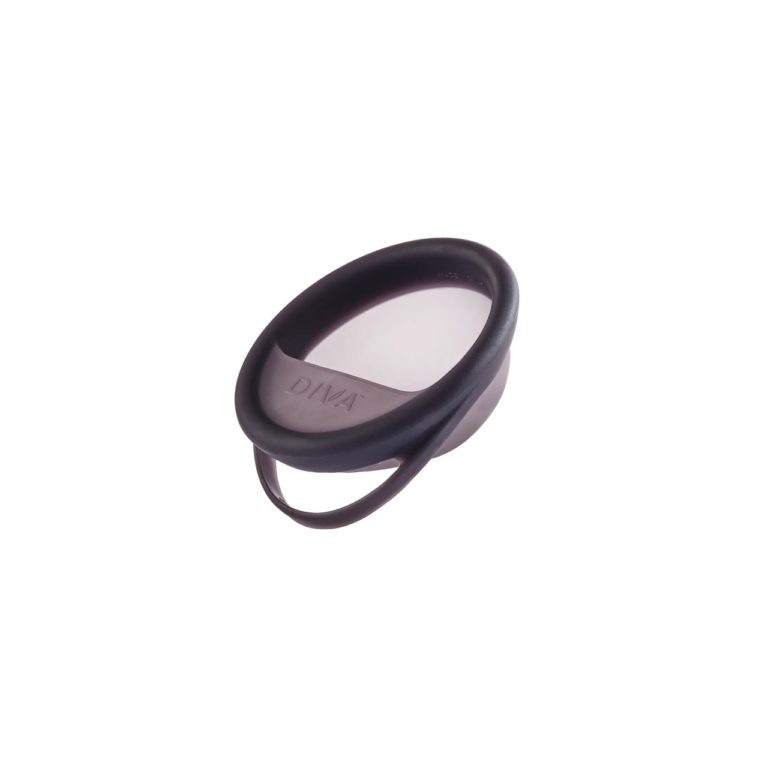
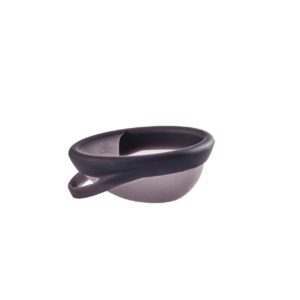 The Diva Disc is a bit different – it has a flat-ish design compared to a regular cup, so it sits horizontally in the vagina rather than vertically, which some people might find more comfortable and intuitive. I certainly find this disc easier to insert than many of the traditional cups I’ve used, largely because there’s no need to twist it around to create a suction seal once it’s inserted – you just fold it in half to make it small enough for insertion, shove it in there, and it unfolds on its own and usually finds the right position without issue.
The Diva Disc is a bit different – it has a flat-ish design compared to a regular cup, so it sits horizontally in the vagina rather than vertically, which some people might find more comfortable and intuitive. I certainly find this disc easier to insert than many of the traditional cups I’ve used, largely because there’s no need to twist it around to create a suction seal once it’s inserted – you just fold it in half to make it small enough for insertion, shove it in there, and it unfolds on its own and usually finds the right position without issue.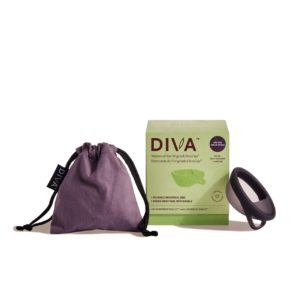 As for more basic considerations: the Diva Disc leaks less, and is way more comfortable, than most of the cups I’ve owned. My vagina can get sensitive to penetration during my period after a while, but the Diva Disc’s shape and soft silicone are comfy enough that they don’t bother me, even when my vag is throwing a tantrum. The capacity of this disc is great, and it’s supposedly suitable for up to 12 hours of wear (although I try to take mine out and rinse it off every 8 hours, at most, for vaginal flora health reasons). The disc is a dark grey color, which – while it doesn’t especially spark joy for me – would probably make this product feel more welcoming for nonbinary and transmasc menstruators. As is common in the cup world, this disc also comes with a little storage bag, so you can keep it lint-free when you travel with it. Ideal.
As for more basic considerations: the Diva Disc leaks less, and is way more comfortable, than most of the cups I’ve owned. My vagina can get sensitive to penetration during my period after a while, but the Diva Disc’s shape and soft silicone are comfy enough that they don’t bother me, even when my vag is throwing a tantrum. The capacity of this disc is great, and it’s supposedly suitable for up to 12 hours of wear (although I try to take mine out and rinse it off every 8 hours, at most, for vaginal flora health reasons). The disc is a dark grey color, which – while it doesn’t especially spark joy for me – would probably make this product feel more welcoming for nonbinary and transmasc menstruators. As is common in the cup world, this disc also comes with a little storage bag, so you can keep it lint-free when you travel with it. Ideal.
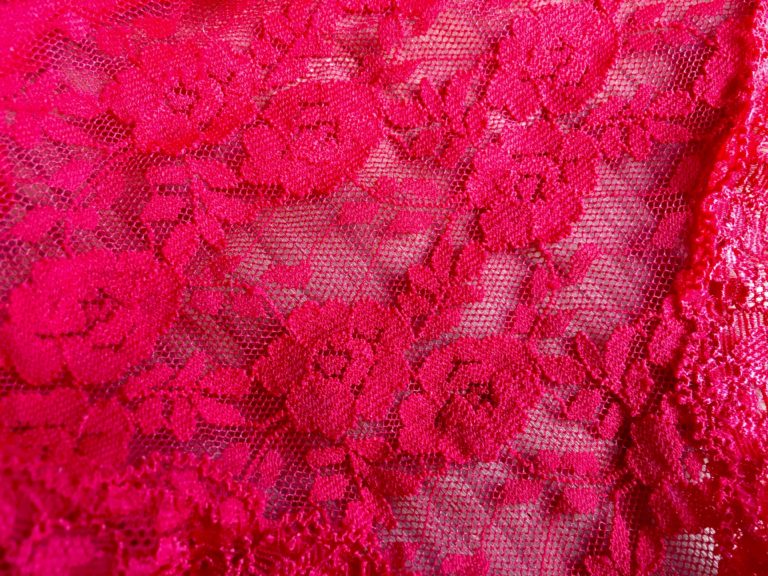
 I don’t know if most cis men really know how deeply their attitude on period sex can affect a menstruating person’s self-esteem. While I understand why someone might not want to stick their face in blood, it makes me feel so sad and rejected to have a partner who finds my bits distasteful one week out of every month. Even the smallest step toward gaining comfort with menstrual sex – pressing a
I don’t know if most cis men really know how deeply their attitude on period sex can affect a menstruating person’s self-esteem. While I understand why someone might not want to stick their face in blood, it makes me feel so sad and rejected to have a partner who finds my bits distasteful one week out of every month. Even the smallest step toward gaining comfort with menstrual sex – pressing a 